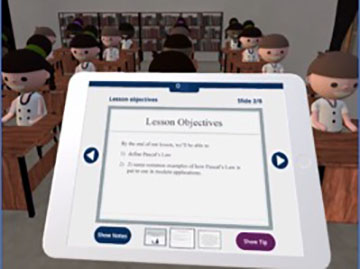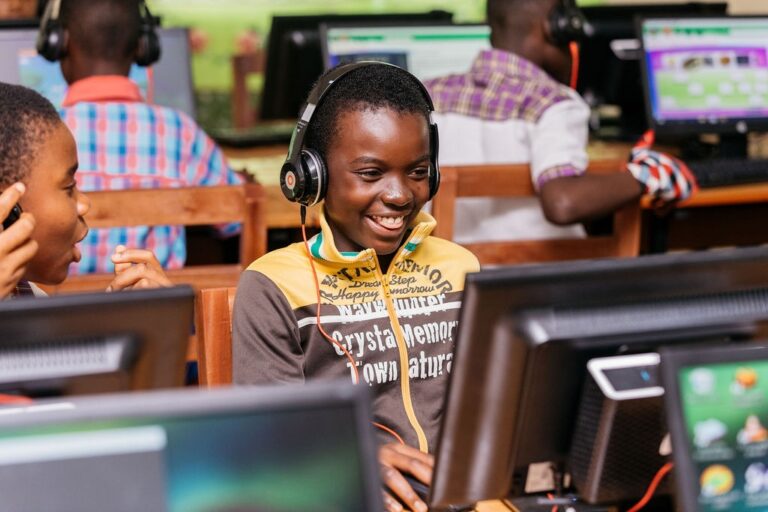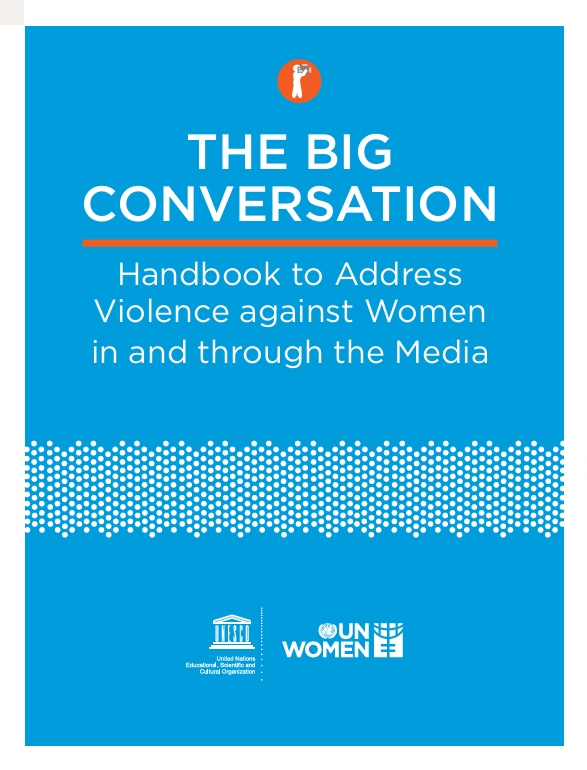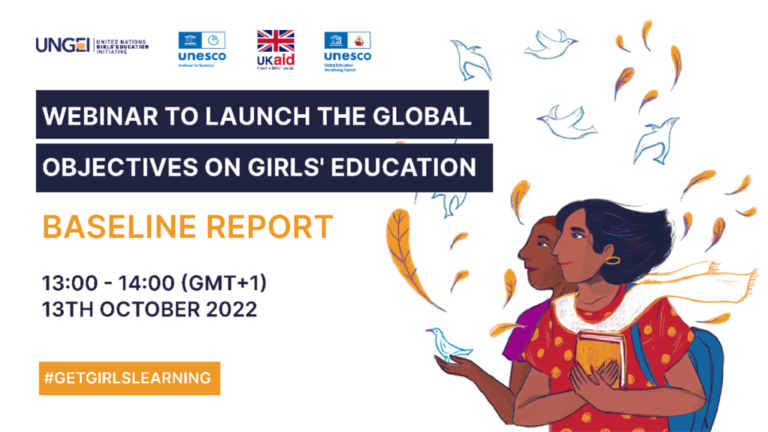by CSD|May 23rd, 2018
By Haein Shin & Tara Stafford Ocansey
Addressing the global learning crisis and closing the digital divide requires systems of education that equip young learners with 21st century skills that can be enabled through integration of technology tools in their classrooms. However, teachers often lack not only digital skills themselves, but also the pedagogical breadth—to meaningfully engage students in inquiry-based activities that make the most of access to technology. Seen from global, theoretical and practical levels, teacher training is a cornerstone of achieving quality education. It ensures and sustains an educational process that produces meaningful learning, which is adaptable as new knowledge and techniques emerge in the field. However, myriad factors—slow uptake of pedagogical methods, lax implementation of policies, shortage of funds and personnel, shortage of expertise available equitably across regions and locales, lack of incentives for the profession, limited time, and difficult access due to distance—all contribute to gaps in teacher training, even as training needs persist and grow.
Such limiting circumstances surround ing teacher training inspired an innovative solution for Connect To Learn’s Myanmar project. Using Virtual Reality (VR), teacher training can be facilitated in a comfortable and individual virtual space where teachers can practice pedagogical approaches and new ways of integrating Information and Communications Technology (ICT) at their convenience and as frequently as possible. It reduces the hassle of high costs associated with training venues, per diems during training periods, travel to training sites or missing school days. While introduction of technology does not completely eliminate the need for in-person and personalized trainings, the VR for teacher training pilot was first envisioned as the project began sketching out a sustainability plan of the existing Connect To Learn Myanmar project, launched in 2015.
ing teacher training inspired an innovative solution for Connect To Learn’s Myanmar project. Using Virtual Reality (VR), teacher training can be facilitated in a comfortable and individual virtual space where teachers can practice pedagogical approaches and new ways of integrating Information and Communications Technology (ICT) at their convenience and as frequently as possible. It reduces the hassle of high costs associated with training venues, per diems during training periods, travel to training sites or missing school days. While introduction of technology does not completely eliminate the need for in-person and personalized trainings, the VR for teacher training pilot was first envisioned as the project began sketching out a sustainability plan of the existing Connect To Learn Myanmar project, launched in 2015.
Connect To Learn Myanmar is a project headed by Ericsson in partnership with the Earth Institute and with funding support from Qualcomm® Wireless Reach™. It provides ICT solutions to 31 schools with in-person teacher training under the broader vision of increasing quality of instruction and student participation, especially for girls, in secondary schools in marginalized communities. With the project period ending in 2019 and funding support for in-person teacher trainings ending as a result, the project proposed digital content housed through a VR environment, which can continually be used by teachers even after project wrap-up with Ministry of Education oversight.
The VR phenomenon is rapidly growing, with medical and entertainment industries testing its wide range of potential uses. Application of VR to the education setting is also still in its infancy and holds a lot of promise. Research shows that this emerging approach to teacher training can yield positive results for teachers especially in learning classroom management skills (Annetta et al, 2014; Bailenson et al, 2008) while encouraging an interactive teaching practice and providing opportunities to practice specific teaching methods (such as integrating ICT for inquiry-based learning), as well as promoting ongoing formative assessment.
The module development required the merging of a few different aspects: aligning content to existing Myanmar curriculum, incorporating learner-centered teaching methods, integrating ICT use in class for students and enabling feedback based on the virtual classroom happenings.
Based on the pedagogical practices encouraged in the existing project framework, the design and metrics of the VR environment was first set by identifying specific teacher training goals, which are:
- For teachers to practice using backward design (considering the intended learning outcomes first) to determine lesson objectives and activities
- For teachers to engage students with primarily student-centered learning methods
- For teachers to practice using different pedagogies, including strategies that make use of ICT
- For teachers to make lessons relevant to students’ lives
- For teachers to build in formative assessment activities to their lessons
 These training goals and activities were translated into a logical flow template developed by Immersive VR, building the steps through which teachers are guided to engage students in the lesson topic by recalling prior knowledge, to introduce new curriculum content with student interactions and suggestions for appropriate teacher responses to student inquiries, then to facilitate learner-centered activities that use different pedagogical methods, including: open-ended questions; pair/group work; individual practice and discussion. Given the scope of the project, ways of integrating ICT that build students’ digital skills in context of existing lessons were a priority. Some examples of the ICT use in the class include: finding videos, using a tablet application to facilitate a practice exercise, conducting searches using Internet browsers, word processing and finding data online and applying it to their class topic. In order to recreate the nuances of a real-life classroom, student responses can be assessed as “correct” “almost correct” or “incorrect”. The team wanted to avoid a correct/incorrect binary so that teachers can practice filling in the blanks of students’ emerging understanding of new topics.
These training goals and activities were translated into a logical flow template developed by Immersive VR, building the steps through which teachers are guided to engage students in the lesson topic by recalling prior knowledge, to introduce new curriculum content with student interactions and suggestions for appropriate teacher responses to student inquiries, then to facilitate learner-centered activities that use different pedagogical methods, including: open-ended questions; pair/group work; individual practice and discussion. Given the scope of the project, ways of integrating ICT that build students’ digital skills in context of existing lessons were a priority. Some examples of the ICT use in the class include: finding videos, using a tablet application to facilitate a practice exercise, conducting searches using Internet browsers, word processing and finding data online and applying it to their class topic. In order to recreate the nuances of a real-life classroom, student responses can be assessed as “correct” “almost correct” or “incorrect”. The team wanted to avoid a correct/incorrect binary so that teachers can practice filling in the blanks of students’ emerging understanding of new topics.
An essential element of this VR experience is the ability for teachers to receive feedback. The metrics utilized for lesson content are pedagogical methods teachers used, ICT use and ordering of activities that best follow the lesson sequence. On classroom management, duration of interaction, accuracy in setting relevant time limits, volume of voice, eye contact, appropriate response to student queries and time taken to call on students with questions are considerations.
While these metrics exist, the primary purpose within the environment is to enable teachers to come out of their VR classroom with additional ideas for activities, lessons, and ways of assessing student understanding that can be built into their real classroom for further diversified medium and means of instruction.
The project’s first module is currently going through a user experience testing period, after which the modules will be piloted with Myanmar government’s Department of Basic Education under the leadership of Ericsson. The project partners are currently working diligently with the Ministry of Education to ensure sustainability and growth of project components going forward.





